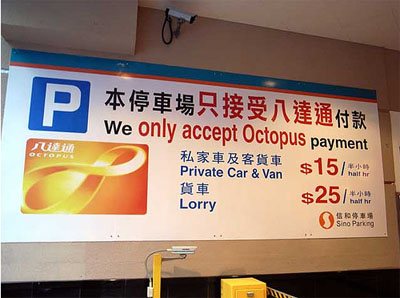In Hong Kong, 95 percent of the population between the ages of 16 and 65 possesses the touch-and-go ‘Smart Card’ transit pass to board the region’s public transportation network.

There are over 207,000 Chicago Card
or Chicago Plus cards in circulation used to board CTA and Pace buses and
trains. The touch-and-go technology
eliminates the need for exact change and deducts a person’s fare from their
linked bank account. This
moneyless system often called a ‘Smart Card,’ is growing increasingly popular
among transit agencies around the world as an efficient, cost-effective, and
time-saving fare collection method.
Hong Kong takes their smart card to an
entirely new level. The Octopus
Card, as it is known in the region, not only uses smart card technology in their
transit system, but passengers can use their card to purchase a newspaper at a
kiosk before boarding, buy coffee or a snack outside the train station, or even
pay for groceries at the local supermarket. With more than 1,000 registered businesses
accepting this form of payment, the Octopus Card extends its tentacles beyond
the scope of transit.
Usage of the Octopus Card extends to
Hong
Kong’s 18,000 parking meters, as drivers
use the card to add time to their parking space. While Chicago won’t be able to use their Chicago Cards to pay for
parking just yet, Chicago was recently selected as a recipient of
a $153 million federal grant to implement a comprehensive bus rapid transit
network and parking pricing program to help alleviate traffic congestion in the
city. Like Hong Kong’s Octopus
Card, Chicago is turning to a
moneyless system at its parking meters using wireless handheld devices and cell
phones to pay for their on-street parking.
Hong Kong’s Octopus Card is multi-dimensional
and user-friendly. This card is so popular and widely used in Hong Kong that in
2006 its usage was extended to two Chinese cities, Shenzhen and Macau. While
Metra, Pace, and CTA all utilize various fare card systems for the services they
provide, Pace and CTA have had a fare sharing agreement since the mid-1990s and
now allow the same smart card pass to be used on both of their systems. Chicago
can learn from the success of Hong Kong’s universal fare
card and help better improve the connectivity of the region.
This article was featured in Talking
Transit, MPC’s bi-weekly e-newsletter. To receive the newsletter, email talkingtransit@metroplanning.org
with ‘Subscribe’ in the subject line.